Shimano Ultegra RX road clutch rear derailleur spotted
Unlike SRAM's road clutch derailleur, Shimano's model works with two chainrings
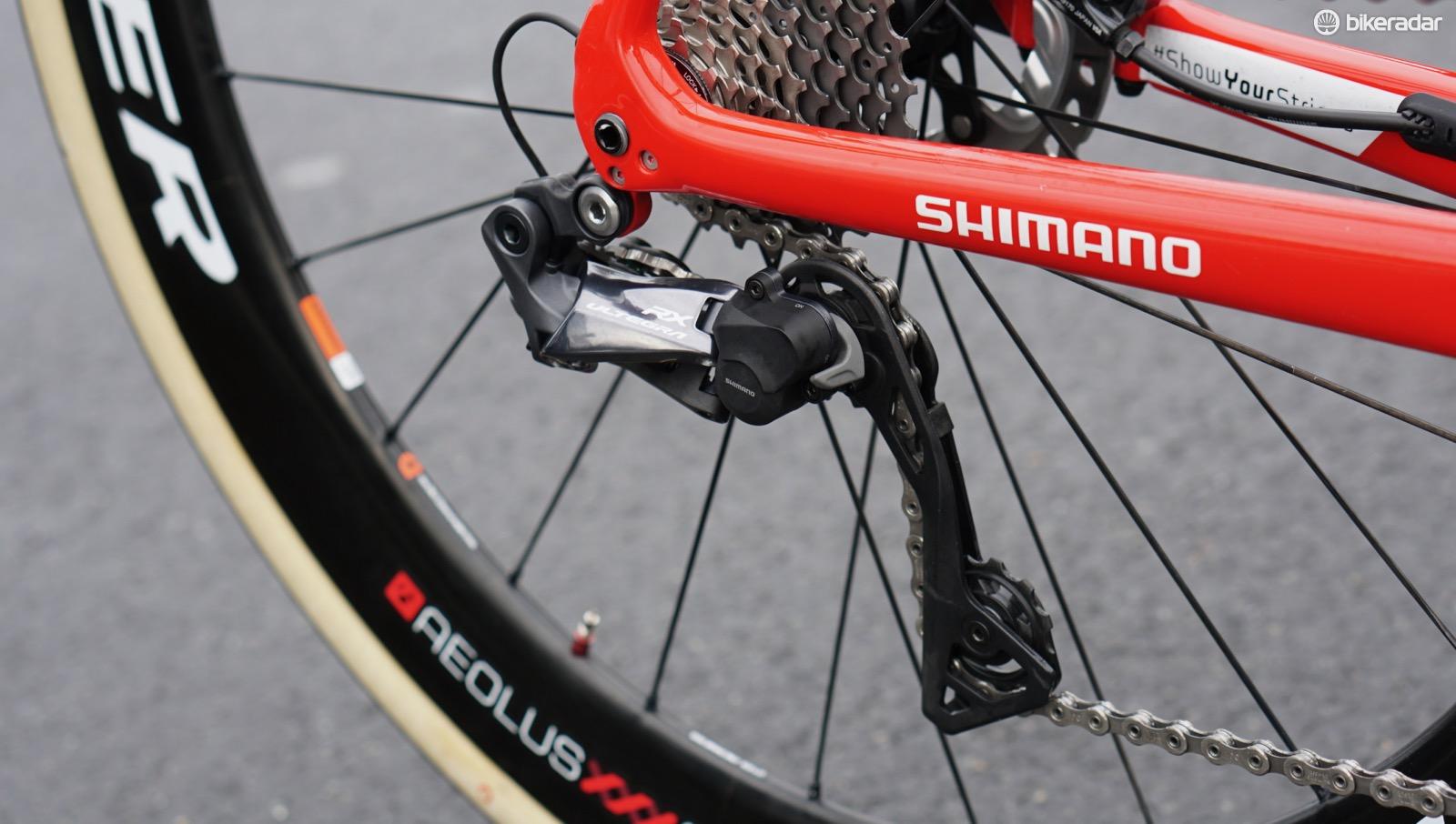
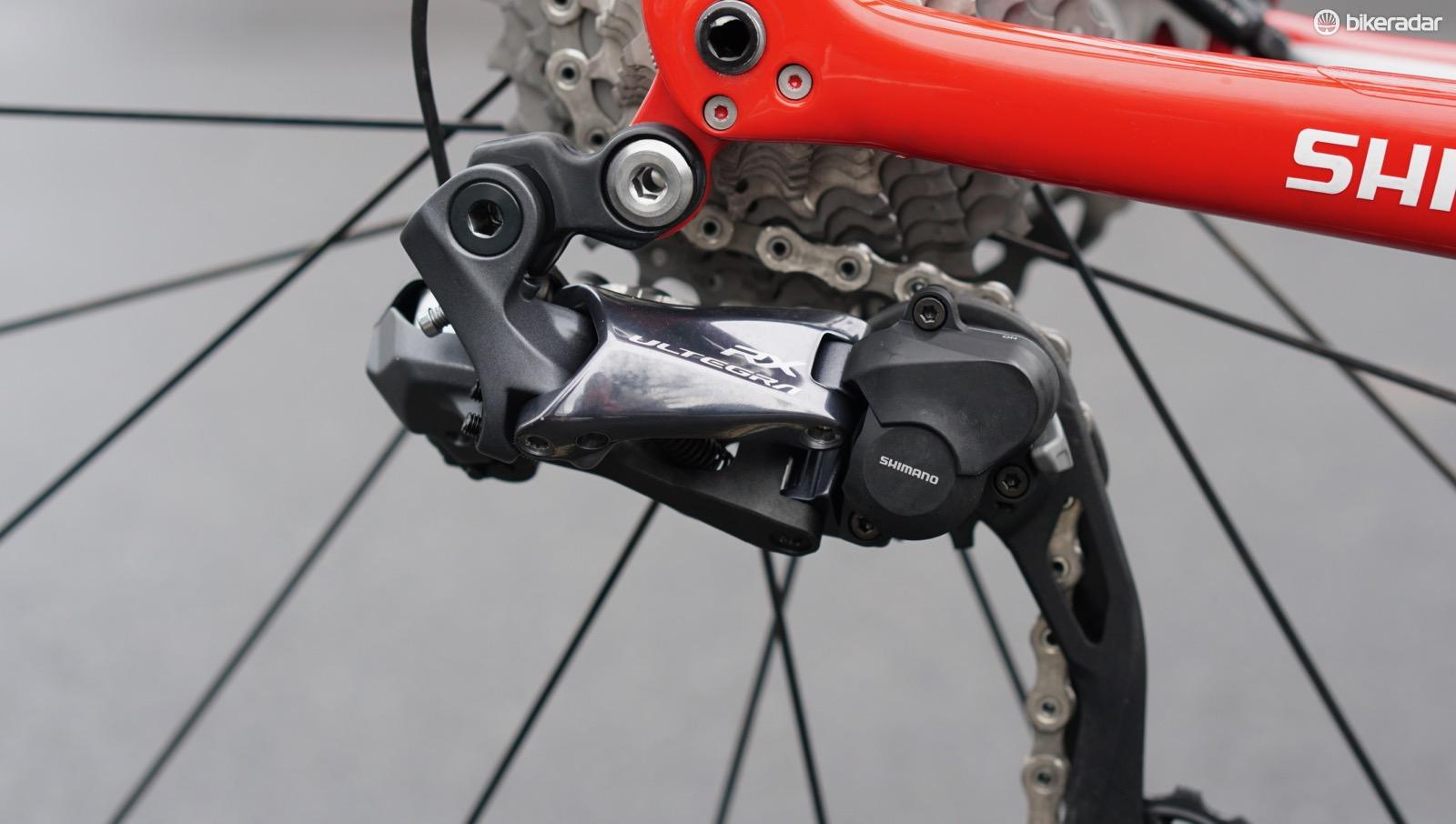
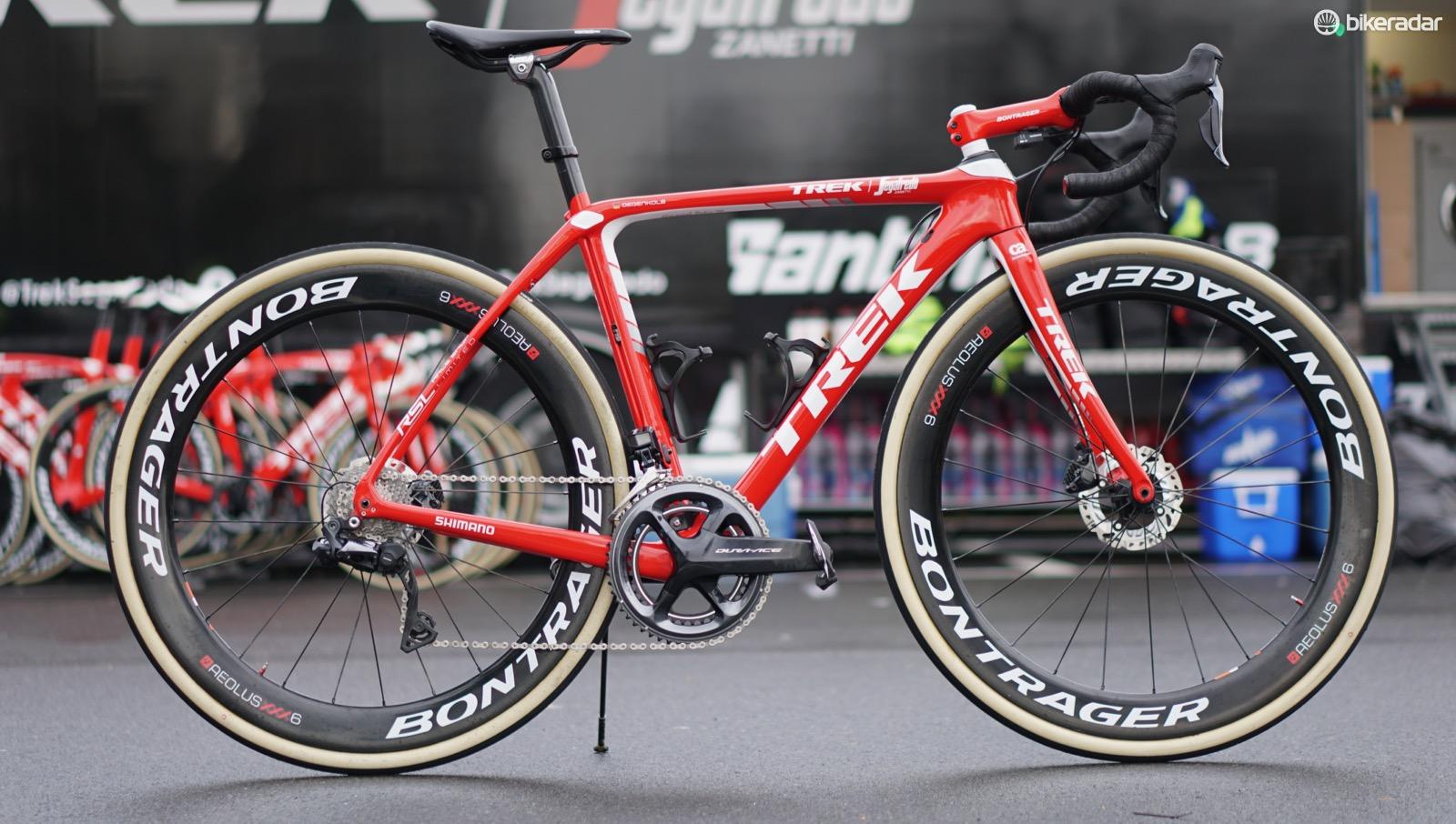
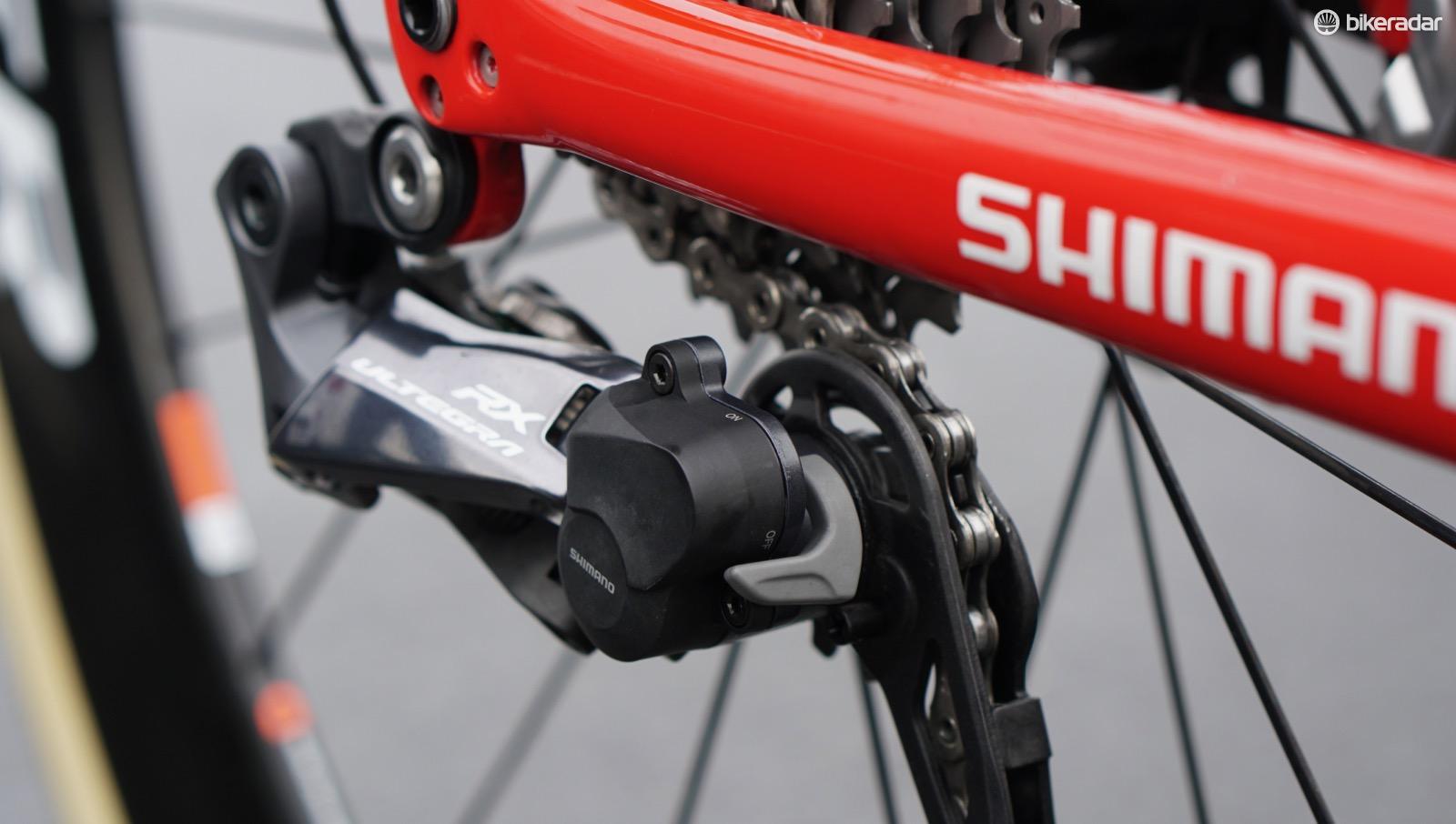
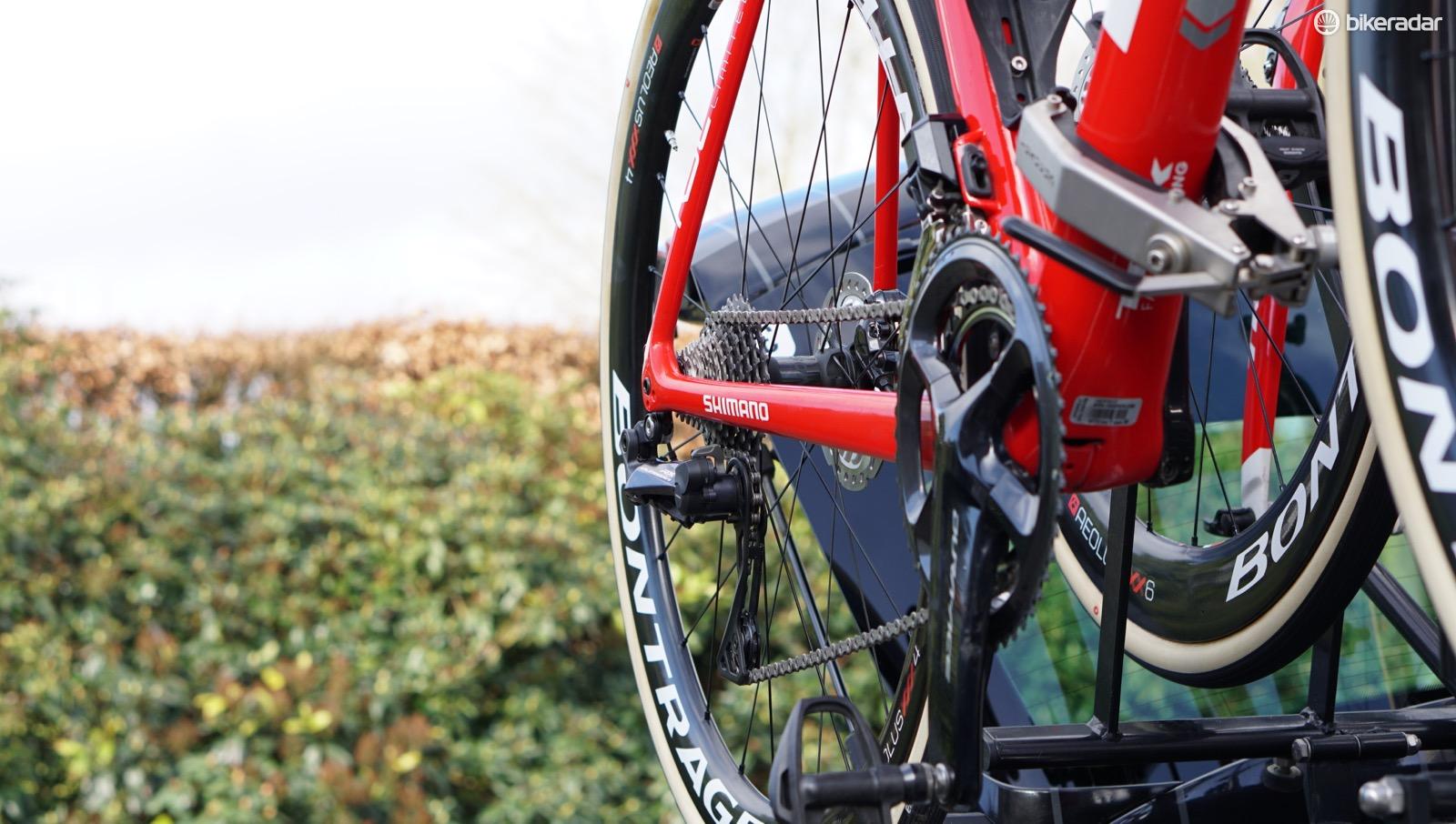
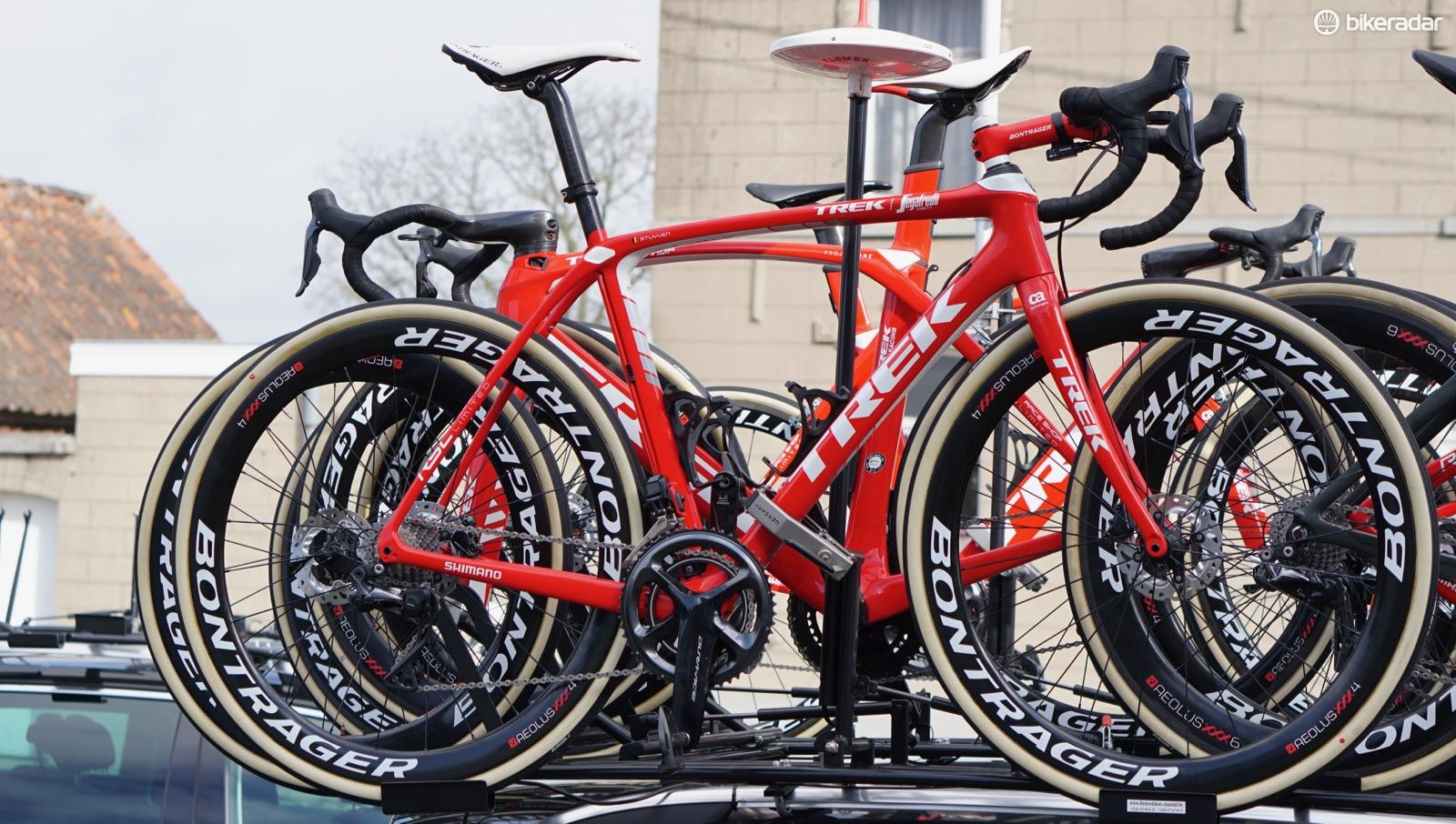
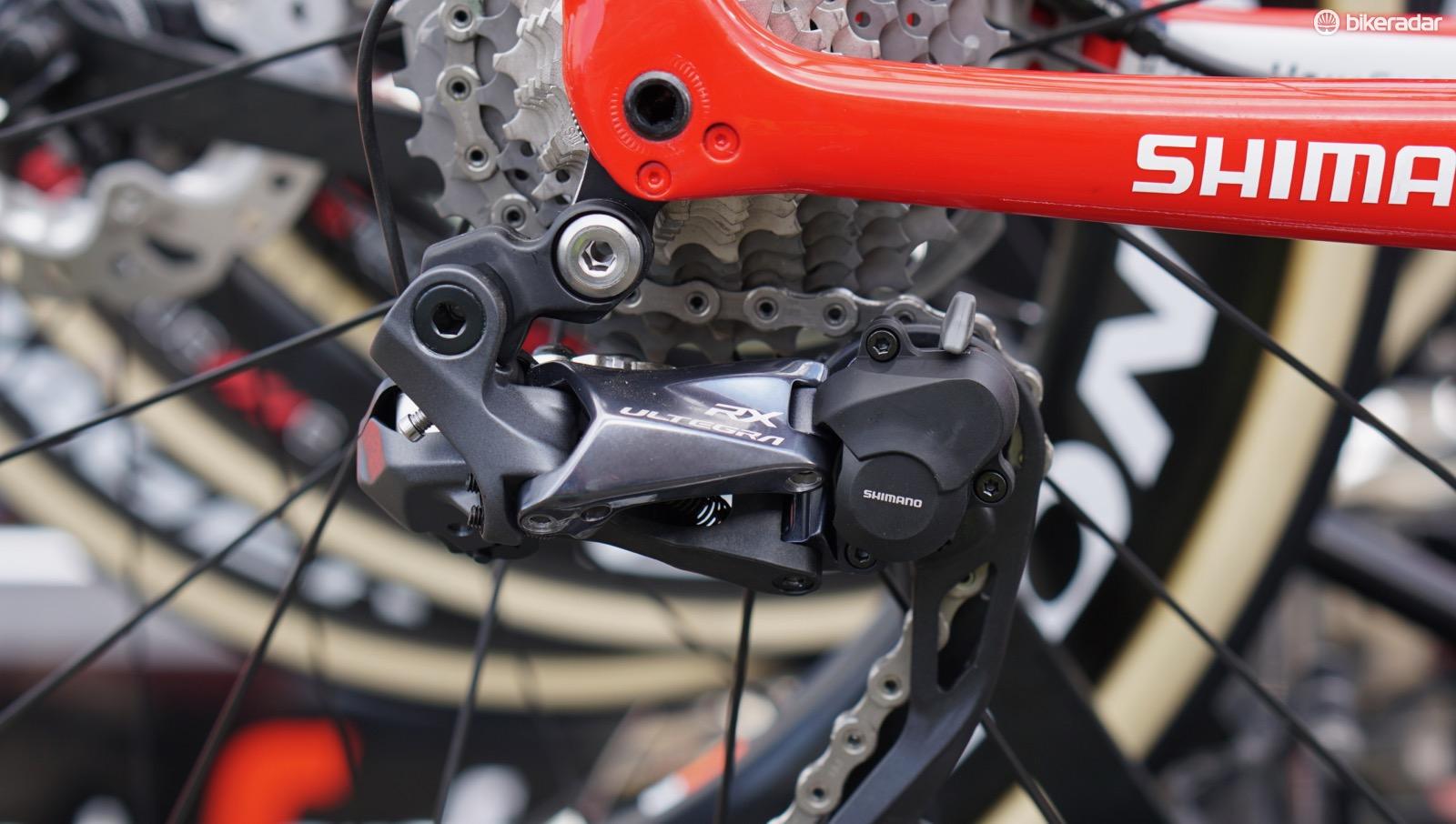
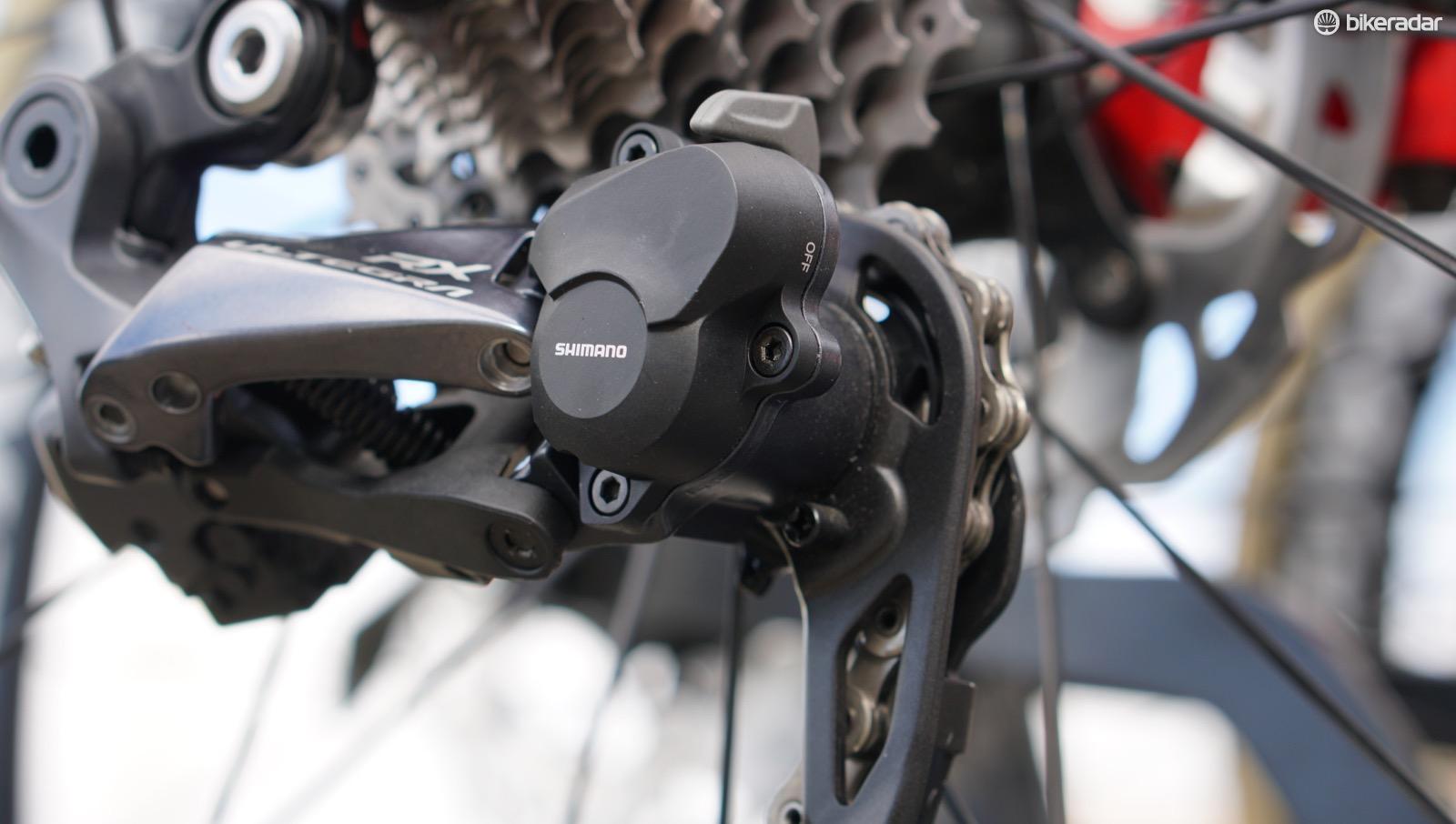
This article first appeared on BikeRadar.
Ahead of the cobble-filled Tour of Flanders, WorldTour squad Trek-Segafredo was testing a new Shimano Ultegra RX clutch rear derailleur. Shimano is not yet talking about this clutch derailleur - which, notably, works with two chainrings - but BikeRadar talked to Trek-Segafredo riders and staff about their experience with the product.
Readers familiar with Shimano's Shadow Plus mountain bike derailleurs will recognize the technology: a switch, or 'clutch', flips the derailleur between a soft-spring setting and a firm-spring setting. The former works like a normal road derailleur; the latter pulls the chain tauter, reducing if not eliminating chain slap and the possibility of dropping a chain on rough terrain.
Shimano Ultegra RX Di2 clutch derailleur
The Tour of Flanders contains more than a dozen cobbled stretches, many on short but sharp climbs, or hellingen. Paris-Roubaix the following Sunday, of course, contains more numerous and more brutal pavé sections. Fat tubulars are the primary change teams make for these races — typically 26-28mm for Flanders and 28-30mm for Roubaix — but chain retention is also a concern as racers rattle across the stones. Most race bikes have chain catchers as a matter of course, to keep the chain from dropping off to the inside of the small chainring.

The 'clutch' is an on/off switch that flips between normal and high spring tension, much like Shimano's Shadow Plus mountain-bike design
Trek-Segafredo technical director Matt Shriver said he had been asking Shimano for a road clutch derailleur for two years, even inquiring about hacking an XTR derailleur to work with the team's Dura-Ace Di2 drivetrains.
Get The Leadout Newsletter
The latest race content, interviews, features, reviews and expert buying guides, direct to your inbox!
"More and more races are going to have some real technical stages, like a Roubaix, or even in the Tour they are going to have a mini Roubaix. So having an option to remove some of that chain movement is a good thing," Shriver said. "Going on feedback from riders in the past, they don't have problems with their drivetrain per se, but sometimes the tension will drop for a split second on really rough sections. There is maybe a small penalty in efficiency [with a clutch derailleur], but in a race like Flanders or Roubaix, you are losing a lot more when your drivetrain isn't engaging smoothly because of chainslap."
Friction Facts founder Jason Smith has said clutch derailleurs — referencing SRAM's Force 1 derailleur at the time — do add a bit of resistance to the drivetrain.

While SRAM's Force 1 clutch rear derailleur came out in 2014, it only works with a single front chainring. Shimano's design works with a front derailleur
Speaking of Force 1, SRAM certainly got a sizable jump on Shimano with a road clutch derailleur, rolling out its Force 1 group for cyclocross in early 2014, and quickly moving that into road applications with bike-brand partners. The notable difference, of course, is that Shimano's Ultegra RX derailleur works with two chainrings, whereas SRAM's system is for a single chainring only.
In both cases, though, the concept is the same: reduce unwanted chain movement.
Shriver said that Trek did a lot of slow-speed camera work in development of its Domane endurance bike, and that it was "incredible to see how much the chain and the tires are moving over the cobbles."

Trek-Segafredo has been testing the clutch derailleur ahead of the Tour of Flanders and Paris-Roubaix
BikeRadar followed Trek-Segafredo on its Tour of Flanders recon ride, where 2015 Paris-Roubaix winner John Degenkolb was testing the Di2 version of the Ultegra RX clutch derailleur on his Domane disc bike for this year's Roubaix. (Watch the video above to see Degenkolb riding it on the cobbled Muur in recon.)
Degenkolb said he was happy with how it worked in keeping the chain tight. He spoke with Shimano technical staff about changing the derailleur from multi-shift (where holding down a lever causes the bike to shift a fixed number of gears) to just standard shifting. In multi-shift mode, the bike still shifts normally, one gear at a time, with shorter presses. Only longer presses engage the multi-shift function.
Trek-Segafredo rider Koen de Kort told BikeRadar that he has already used the derailleur in Belgian races, and was also happy with how it worked.
Shimano is not yet talking about the Ultegra RX clutch derailleur, but we will keep asking and will update this story as information becomes available.